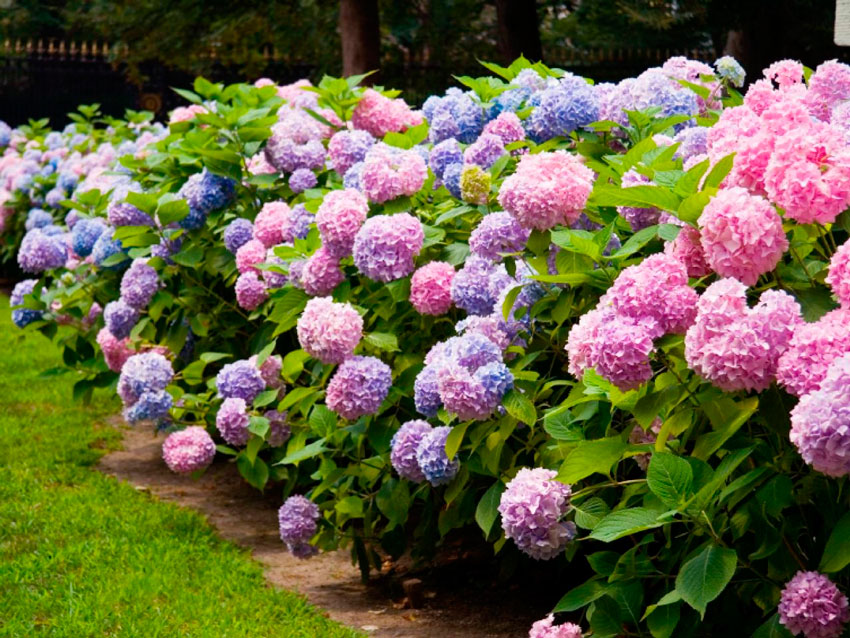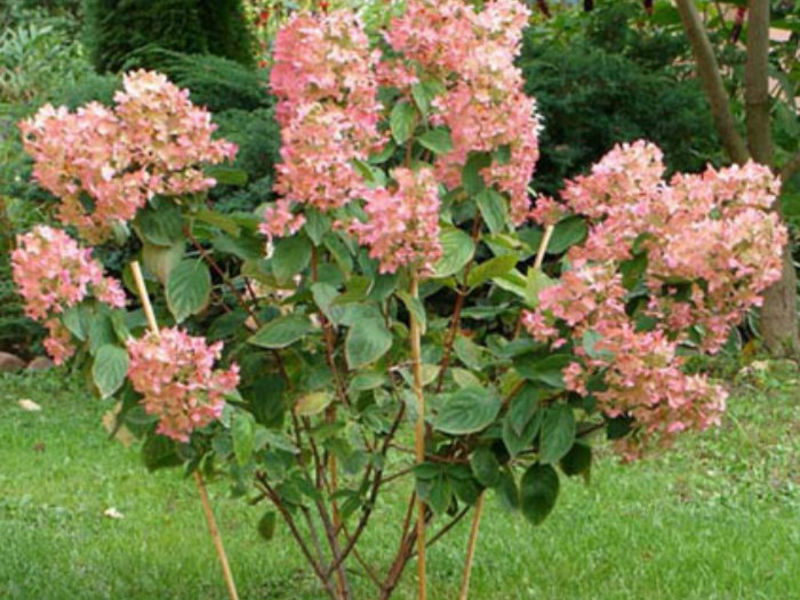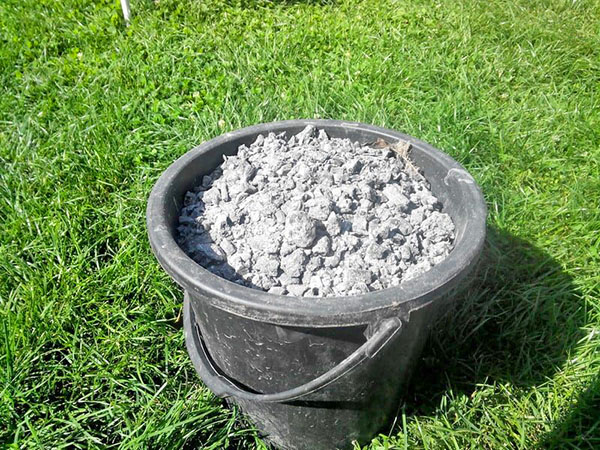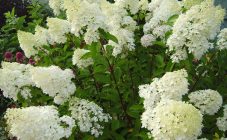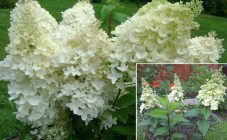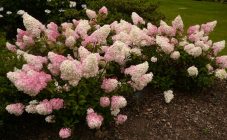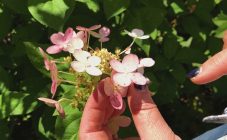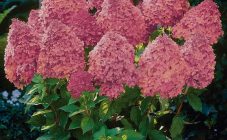Content:
Hydrangea grows best in the southern regions of Russia. You can also meet her in the northern parts of the country, but mainly in the form of an indoor flower. Experienced Russian growers manage to grow this beautiful plant outdoors, even in cold climates. For this, varieties are selected that are resistant to low temperatures, there are about 30 species of them.
Conditions for growing hydrangea in Siberia
Hydrangea in Siberia planting and care
For Siberia, frost-resistant varieties are selected that can withstand temperatures down to -40 degrees. But even if such varieties are planted, they require shelter for the winter.
Make demands on the soil. A suitable option is a loose fertile substrate, pH is from 5.0 to 5.5. If the soil on the site does not meet these parameters, then suitable soil should be prepared.
The garden plant requires moisture, while it does not like stagnant water. For irrigation, you cannot use cold chlorinated water, which negatively affects the hydrangea. Watering is carried out in the morning or evening at the root. For active growth and abundant flowering, fertilization is mandatory.
Reproduction of hydrangea in Siberia
Hydrangea propagation is carried out in 3 ways:
- Seeds;
- By cuttings;
- Layers.
When using the first method, it is problematic to grow a mature plant - it will be possible to get a blooming hydrangea to decorate the garden only after a few years. If we consider this method in the conditions of Siberia, then this process is hardly feasible. First, you will have to germinate the seeds, then grow them at home for about 3 more years before planting in open ground. That is why the other 2 methods are preferable.
Cuttings
Cuttings are harvested from last year's shoots, which are already stiff, or green cuttings are cut in the summer. After that, they are planted in open ground or a greenhouse, additional cover with a film is carried out in order to create a mini greenhouse.
For the successful development of the cutting for the winter, it is dug up with a clod of earth and transplanted into containers, which are removed to a cool room for wintering. Already in the spring they are planted in a permanent place. After 2 years, the hydrangea will bloom.
Reproduction by layering
Although the most popular propagation method is cuttings, propagation by cuttings is possible. The procedure is carried out as follows:
- A healthy lower branch is selected.
- The bark is cut.
- The incised place is instilled.
- After a year, rooting occurs.
- The layers are removed from the mother plant and planted in their place.
Growing by seeds
One way to propagate hydrangeas is by growing from seeds. The climatic conditions of Siberia do not favor him, but you can still get a good plant in this way.
At the initial stage, the seeds are germinated, the bottom of the flat plate is lined with cotton wool, the seeds are placed on it and again covered with a layer of loose cotton wool. Moisten with water and leave for 2 days. If, after the expiration of the term, the roots have formed in the seeds, or they have swollen, then you can sow them.If there are no signs of germination, and the cotton wool is covered with mucus, then the seeds are washed and the procedure is repeated.
Prepared seeds are sown in containers with prepared soil mixture. The height of the container should not exceed 15 cm. Do this as follows. The boxes are covered with 2/3 earthen mixture and grooves are made for the seeds. Spread the seeds, water and cover with foil. If necessary, water it, preventing the soil from drying out. When shoots appear, the film is removed.
You can sow seeds directly into the ground. To do this, prepare a well-lit area in the country and sow seeds according to the same scheme as in containers.
Cultivation of hydrangea in Siberia
Hydrangea in Siberia has the specifics of planting and care, reproduction. Before planting hydrangeas in the harsh climatic conditions of the Siberian region, you should decide on a variety that is adapted for this area.
Variety selection
The choice should be stopped on tree and paniculate varieties. About 20 varieties of panicle hydrangea grow well in Siberia. So, these include Limelight, Medical Flute, Pink Diamond and others.
Smaller varieties: Sanday Fresh and Vanilla Fresh, can be planted even in small areas. There is also a miniature Bobo variety, whose height is slightly more than half a meter. It can be grown in Siberian flower beds.
Other varieties can be grown, but even with a successful winter, the plant may not bloom. Indeed, it is for this that the hydrangea is grown.
Sapling selection
When choosing a seedling, attention is paid to the root system. The roots must be in the ground. In this case, the soil must be moist. With overdried soil, the plant may not take root, since the hydrangea is demanding on moisture.
Plants are planted in spring, after the ground is warm enough and frosts are no longer predicted.
Choosing a place and time of boarding
After the plant is selected, it is worth deciding on the planting site, this is very important for successful cultivation. Siberia is not characterized by a very hot summer, so the plant will need protection from the wind. A good option is to create a flower bed near the building, which will serve not only as protection from the wind, but also from the scorching midday rays.
Before cultivation, a planting hole is prepared, the size of which depends on the size of the seedling. It is poured with 2 buckets of water and left in this state overnight. The next day, the hole is covered with soil for hydrangea. It consists of a mixture of fertile soil, peat, sand and humus, taken in a ratio of 2: 2: 1: 1. The soil is ready for planting.
For the Siberian region, the appropriate landing dates are late May-early June. Plants from containers, as in other regions, can be planted from the moment the soil warms up until autumn. A transshipment method is used for this.
Hydrangea care
Subsequent measures for the cultivation of hydrangea in the Siberian region are not much different from cultivation in other regions. The main care consists in the timely watering, feeding, weeding, pruning and tying the plant.
During the season, the bushes are fertilized 4 times: in spring, in June, in July and before preparing for winter.
For a moisture-loving large-leaved plant, watering is necessary. But at the same time, the water should not stagnate. It is best to water with acidified water.
For good growth, spring pruning is carried out, in which diseased and weakened shoots, dried inflorescences are removed and the tops are cut. In panicle hydrangea, 3 buds are left, in tree hydrangea - 6.
If the hydrangea is properly looked after, then it pleases its owners with abundant and long flowering.In this case, the plant itself can break under the weight of large globular flowers, so it is tied up. To do this, either use a special mesh, or install a support next to the bush, to which the plant is tied.
Compliance with these simple rules will allow you to grow a beautifully flowering plant - hydrangea, even in the harsh Siberian climate.
